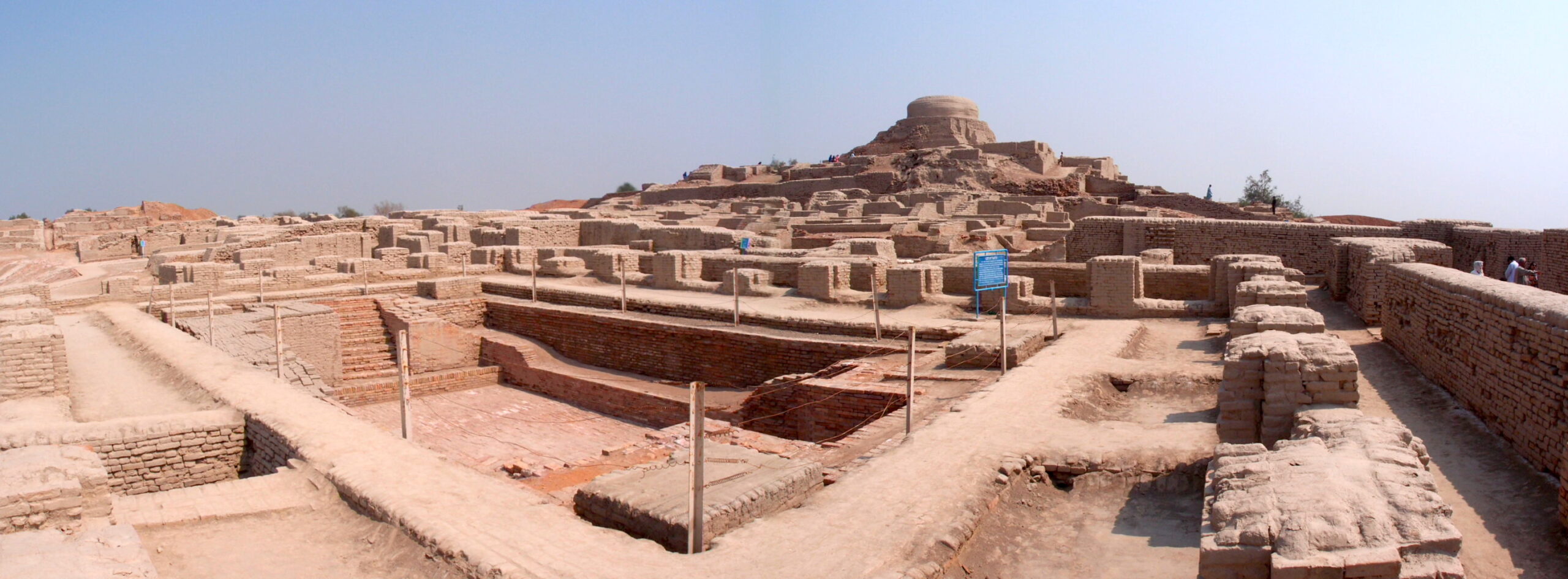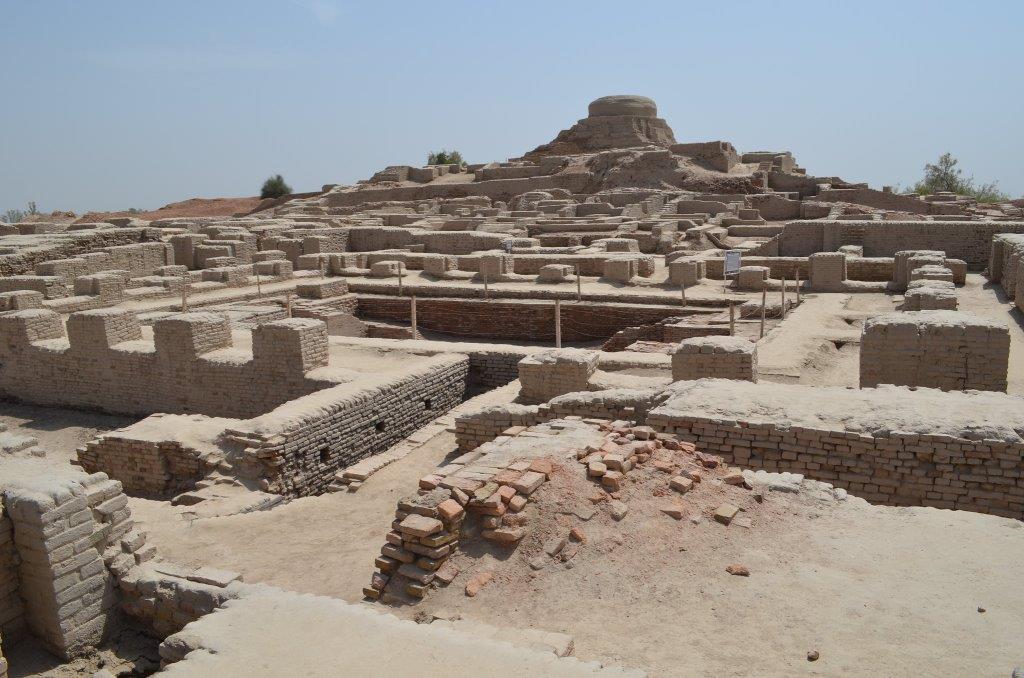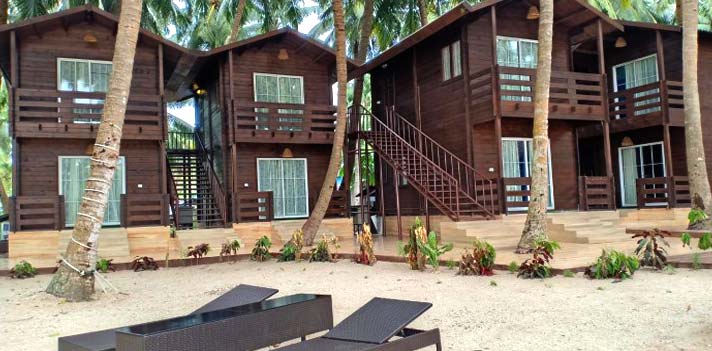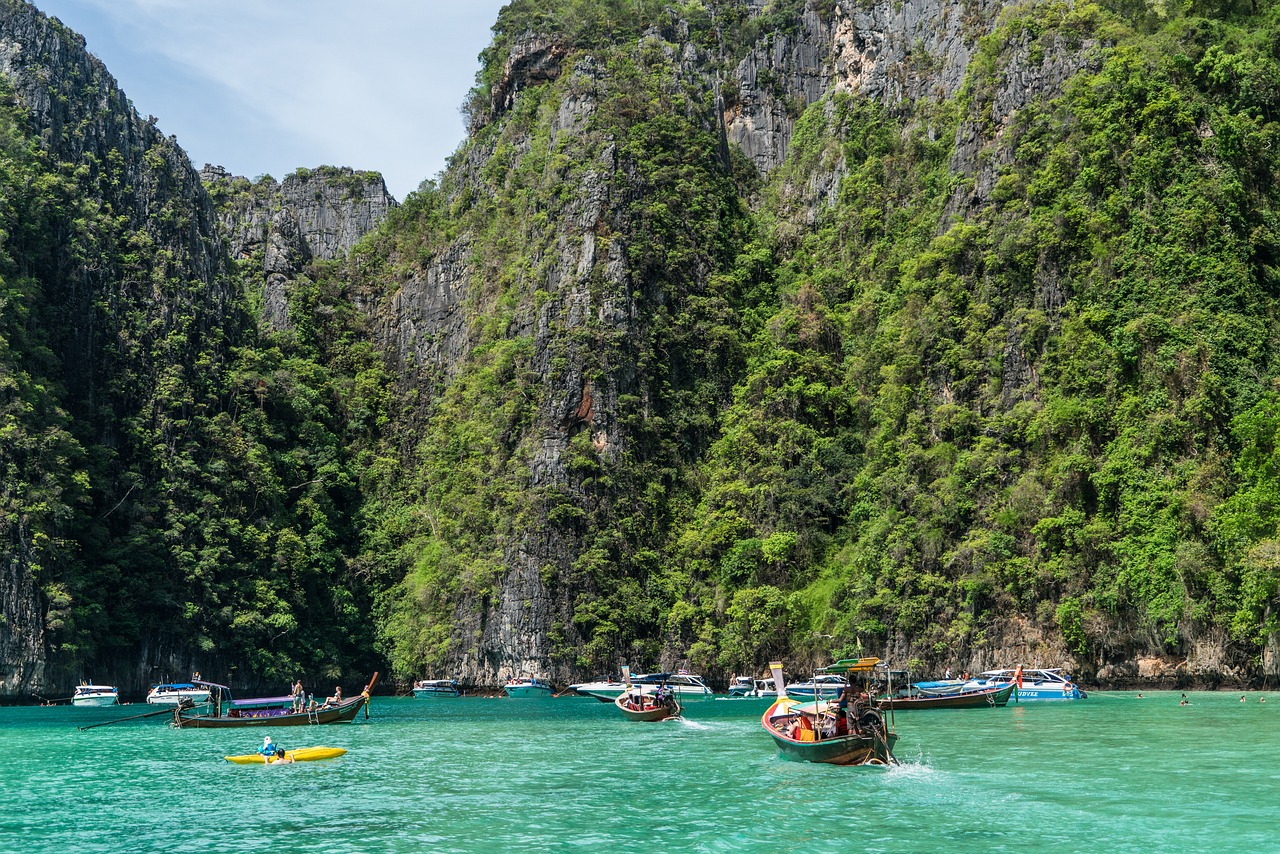Mohenjodaro and Harappa excavations began in the late 1820s, when Charles Mason, a British explorer in India, found the ruins of a lost city. These were the earliest evidence of the Harappan civilization that existed in the region thousands of years ago. About a century later, excavation work also started for the discovery of Mohenjodaro. Both these archaeological sites prove that the northwestern region of South Asia, now Pakistan, was home to the Indus Valley Civilization from 3,300 BC to 1,900 BC. Archaeologists believe that these ruins may unlock some of the most incredible mysteries of the Indus Valley Civilization. Efforts are being made to save the ancient heritage of the Indus Valley from diminishing.
MOHENJODARO
Mohenjodaro, a UNESCO World Heritage Site, is found in the province of Sindh, a 37-minute drive from Larkana. It is one of the most famous historical places of Sindh. Moen Jo Daro means ‘Mound of the Dead Men’ in Sindhi, a locally spoken language.
History
According to the findings of archaeologists, the city of Mohenjodaro was built around the 26th century BC, which makes it one of the largest settlements of the ancient period. It was one of the major urban settlements of the Indus Valley Civilization, aka, the Harappan Civilization. Mohenjodaro was an advanced city as its ruins show signs of remarkable civil engineering and urban planning strategy. Besides this settlement, Harappa, Lothal, Kalibanga, Rakhigarhi and Dholavira were the urban centers of the Indus Valley Civilization, which extended to the Iranian border.
Rediscovery
For more than 3,700 years, the archaeological gem of Mohenjodaro remained unspecified. However, after some hurdles, large-scale excavations began in the 1920s to locate the site of Mohenjodaro. It was led by John Marshall, who was then the Director General of the Archaeological Survey of India. In 1965, excavation work at the Mohenjodaro site came to a halt as the site was showing signs of weather damage. In 1980, the area was further investigated by Italian and German survey groups to dig deeper into the mysteries of Mohenjodaro.
Only four years ago, in 2015, dry core drilling was carried out by the National Fund of Pakistan at this site, the findings of which shocked everyone. A large part of the historical site is yet to be traced.
Urban Infrastructure
Mohenjodaro had a carefully planned infrastructure. According to an estimate described in the Oxford Handbook of Cities in World History, the city had a population of about 40,000. The ruins of this city point to an admirable level of social organization. Mohenjodaro also has large public baths, assembly halls, houses with inner courtyards and some multi-storey constructions.
In the excavation work carried out in Mohenjodaro till date, more than 700 water wells have been unearthed in this ancient city. These findings are a clear proof of the effectiveness of the water supply system at Mohenjodaro.
Artefacts
A large number of artifacts have been discovered as a result of the excavations carried out at Mohenjodaro. These include tools made of copper and stone, figures and sculptures, balance-scales and weights, jewelery articles and toys. These objects are preserved in the National Museum of Pakistan in Karachi.
Travelling To Mohenjo Daro
If you are planning to visit the historical site of Mohenjodaro by air from Karachi, then it will take you around an hour to reach there. Mohenjo Daro Airport lacks advanced infrastructure, which means that only small aircraft can land here. A one-way ticket to/from Mohenjodaro costs around PKR 6,000.
With the help of Khushal Khan Khattak Express you can go to Dokri, which is the only nearest railway station to Mohenjodaro. The train leaves Karachi every night at around 9 PM and it will take you 9 hours to reach there. The ticket fare for a non air conditioned seat in Karachi to Mohenjodaro train is PKR 400, which goes up to PKR 1000 for an air conditioned seat.
Many locals and tourists travel from Larkana city to Mohenjodaro with the help of rickshaws and taxis. The cost of hiring a taxi to cover the distance between Larkana and Mohenjodaro is around INR 500-1000. Rickshaw seems to be a more affordable option which can be hired for just PKR 200.
HARAPPA
Harappa is a very famous archaeological site which is situated at a distance of 24 km from Sahiwal in Punjab. The present village that inspired the name of this historical site is located just 1 km from the Harappan ruins. At this site, remains of a Bronze Age fortified city have been found, which was a part of the Indus Valley Civilization.
History
The Harappan civilization dates back to 6000 BC. It is the oldest known civilization with an economic and social system and urban centres. The Indus Valley Civilization extends from the foothills of the Himalayas to Sindh and Punjab in Pakistan and Gujarat in Southeast India. The Harappan site was badly damaged in the year 1857 as a result of the construction work done for the railway link between the cities of Lahore and Multan.
Rediscovery
Harappa was initially discovered in the 1820s, but no barrier excavation work was carried out at the site at that time. However, after the discovery and excavation of Mohenjodaro, the interest of archaeologists in the history of the Indus Valley Civilization increased. This renewed interest led him to rediscover the historic city of Harappa and begin excavations at the site with a fresh perspective.
Urban Infrastructure
In comparison to an effective urban infrastructure, the city of Harappa was once home to 23,000 inhabitants. This ancient urban settlement covers a total area of 150 hectares, mostly mud brick houses. Both Mohenjodaro and Harappa had similar urban layout and planning. The infrastructure of the Harappan city consisted of individual and joint living quarters, flat-roofed brick houses, fortified religious and administrative centres.
Artefacts
Some of the finest artefacts have been unearthed from the Harappan site. These valuable items include engraved seals with animal and human motifs, stone and copper tools, ornamental jewellery, hand-made sculptures, toys and jewelery articles. Most of these artifacts are preserved in the Archaeological Museum located in Harappa, Punjab.
Travelling to Harappa
Being the nearest city to Harappa, a world famous archaeological site, Sahiwal serves as the main center for visitors and tourists. Harappa is only 45 minutes drive from Sahiwal. With fares of PKR 15 only, a public bus from Sahiwal to Harappa leaves after every 30 minutes.
The fare for a minibus that can take you from Sahiwal to Harappa is PKR 20. Rickshaws and taxis can also be hired to visit Harappa, which amount to PKR 350 and PKR 500 respectively. And from Harappa to wondrous sites of natural beauty, Pakistan is a fascinating country.
Read about more heritage site in India
- Nalanda University : An Ancient Seat of Learning
- Great Himalayan National Park – What You Should Know
- RANI KI VAV – WHERE EVERY STEP TELLS A STORY
- Hill Forts of Rajasthan – Symbolizing Glory Of Past
- Red Fort : Explore The History Of The Mughal Dynasty
- Jantar Mantar, Jaipur – The World’s Largest Sundial
- Champaner & Pavagadh – Archaeological Park
Frequently Asked Questions About Mohenjodaro & Harappa
Q. What is Mohenjodaro famous for?
A – The name Mohenjodaro is reputed to denote the “Mound of the Dead”. The archaeological importance of the site was first recognized in 1922, a year after the Harappan discovery. Later excavations revealed that the mound contains the remains of what was once the largest city of the Indus Civilization.
Q. Who discovered Mohenjodaro?
A – Mohenjo-daro was discovered in 1922 by an officer of the Archaeological Survey of India, R. D. Banerjee, two years after major excavations began at Harappa, about 590 km to the north.
Q. Where is Mohenjodaro now?
A – Archaeologists first visited Mohenjodaro in 1911. Several excavations took place from 1920 to 1931. Little investigation took place in the 1930s, and later excavations followed in 1950 and 1964. The ancient city is situated at a high altitude in the modern Larkana district of Sindh. Province in Pakistan.
Q. How was Mohenjodaro destroyed?
A – Apparently the Indus civilization was likely to be destroyed by Indo-European immigrants from Iran, the Aryans. The cities of Mohenjo-daro and Harappa were built of bricks burnt by fire. For centuries the need for wood to make bricks negated the rural side and may have contributed to the decline.
Q. Are Mohenjodaro and Harappa the same?
A – While the site of Mohenjodaro is located in the Punjab region, Harappa is located in the Sindh province. This is one of the major differences. It is important to highlight that although differences existed between the two civilizations of Harappa and Mohenjo-daro, they can be considered similar in many aspects.
Q. How old is Mohenjodaro?
A – Roughly 4,500 years ago, 35,000 people lived and worked in the sprawling 250-acre city along the banks of the Indus River in Pakistan. Mohenjodaro, sitting under the mud for thousands of years, is a well-preserved remnant of the ancient Indus Valley Civilization.











